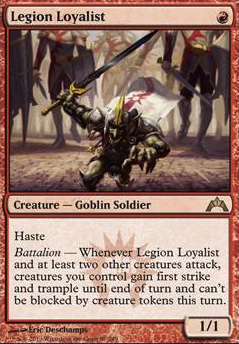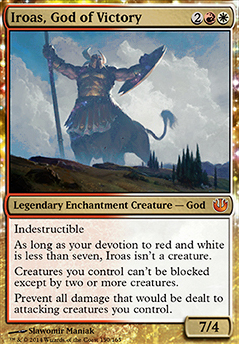Creature (39)
- 1x Angel of Jubilation
- 1x Angrath's Marauders
- 1x Aurelia, the Warleader
- 1x Brimaz, King of Oreskos
- 1x Captivating Crew
- 1x Cavalier of Dawn
- 1x Cavalier of Flame
- 1x Elesh Norn, Grand Cenobite
- 1x Etali, Primal Storm
- 1x Feldon of the Third Path
- 1x Fireflux Squad
- 1x Gisela, Blade of Goldnight
- 1x God-Eternal Oketra
- 1x Grand Abolisher
- 1x Hellrider
-
1x
Hero of Bladehold
 *f-pre*
*f-pre*
- 1x Legion Loyalist
- 1x Leonin Warleader
- 1x Linvala, Keeper of Silence
- 1x Loxodon Gatekeeper
- 1x Luminous Broodmoth
- 1x Neheb, the Eternal
-
1x
Odric, Lunarch Marshal

- 1x Odric, Master Tactician
- 1x Ogre Battledriver
- 1x Palace Jailer
- 1x Purphoros, God of the Forge
- 1x Recruiter of the Guard
- 1x Rimescale Dragon
- 1x Robber of the Rich
- 1x Sin Prodder
-
1x
Sun Titan

- 1x Tectonic Giant
-
1x
Thalia, Heretic Cathar

- 1x Tilonalli's Summoner
- 1x Torbran, Thane of Red Fell
- 1x Verge Rangers
- 1x War Priest of Thune
- 1x Winota, Joiner of Forces
Land (36)
- 1x Arid Mesa
- 1x Battlefield Forge
- 1x Castle Embereth
- 1x Clifftop Retreat
- 1x Command Tower
- 1x Hanweir Battlements Meld
- 1x Inspiring Vantage
- 1x Mistveil Plains
- 1x Nykthos, Shrine to Nyx
- 1x Rugged Prairie
- 1x Sacred Foundry
- 1x Slayers' Stronghold
- 12x Snow-Covered Mountain
- 10x Snow-Covered Plains
- 1x Sunbaked Canyon
- 1x Temple of Triumph
Enchantment (8)
- 1x Aggravated Assault
- 1x Furious Rise
- 1x Furnace of Rath
- 1x Gratuitous Violence
- 1x Pyrohemia
- 1x Repercussion
- 1x Smothering Tithe
- 1x Underworld Breach
Sorcery (1)
Planeswalker (1)
Commander (1)
Artifact (9)
- 1x Arcane Signet
- 1x Boros Keyrune
- 1x Boros Signet
- 1x Commander's Sphere
- 1x Expedition Map
- 1x Sol Ring
- 1x Sunforger
- 1x Sword of Feast and Famine
- 1x Talisman of Conviction
Instant (5)
Maybeboard
Artifact (3)
Instant (2)
Sorcery (1)
Suggestions
Updates Add
Comments
Attention! Complete Comment Tutorial! This annoying message will go away once you do!
Important! Formatting tips — Comment Tutorial — markdown syntax
Please login to comment
| Date added | 5 years |
| Last updated | 3 years |
| Legality | This deck is Commander / EDH legal. |
| Rarity (main - side) | 19 - 0 Mythic Rares 45 - 0 Rares 9 - 0 Uncommons 5 - 0 Commons |
| Cards | 100 |
| Avg. CMC | 3.66 |
| Tokens | Cat 1/1 W w/ Lifelink, Cat Soldier 1/1 W, City's Blessing, Copy Clone, Elemental 1/1 R, Emblem Chandra, Torch of Defiance, Golem 3/3 C, Soldier 1/1 W, Monarch Emblem, Treasure, Zombie Warrior 4/4 B |
| Folders | My Builds, Iroas |
| Votes | |
| Ignored suggestions | |
| Shared with | |
| Views |


